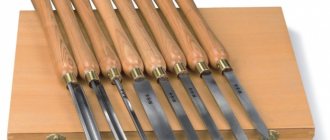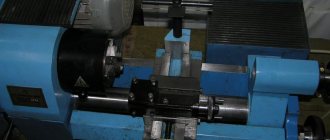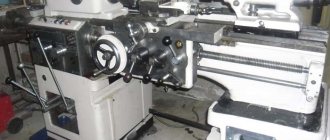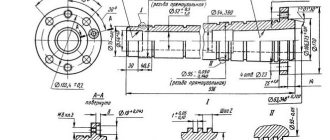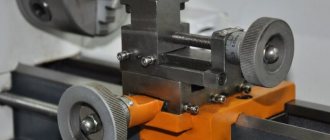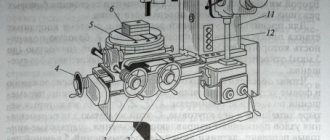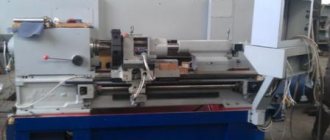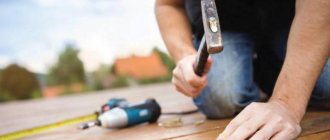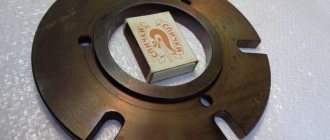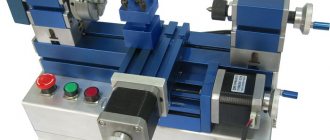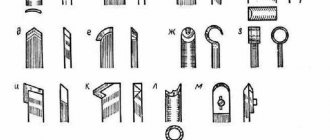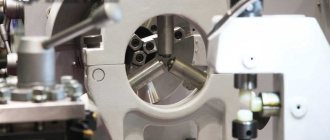Classification
The copier is used in lathes for wood and metal. It significantly simplifies the work on the template and speeds up production.
On wood
There are the following types of woodworking equipment with a copier:
- Classic, where a chisel is used as a cutting tool. Such machines are not suitable for large industrial production.
- Copiers with manual control type.
- Copy milling machine. It is used for processing flat and three-dimensional workpieces.
- Units with Numerical Program Control are used in mass production for the manufacture of expensive products.
Machines with a copier have an increased level of accuracy and performance in terms of technical characteristics.
For metal
For metal, the classification of lathes is similar. There are classic models where the workpiece is fixed in a faceplate or chuck and processed with a cutter. Copying machines are used to produce products in circulation.
Milling types of machines are used for processing flat surfaces and volumetric workpieces. CNC is used on an industrial scale.
How to make a copier for a wood lathe?
- electric motor with a power of approximately 800W;
- metal shaft with a nozzle for changing the saw blade;
- metal profile of square section, metal corners;
- wooden sheet;
- furniture guides;
- metal marker;
- fastening materials.
- welding machine, grinder.
First you need to make metal guides.
They will allow you to move the entire copier structure in the longitudinal plane. In this case, two metal corners are used, which are turned over with the sharp side down. The corners are welded together into pieces of metal profile.
This approach allows us to provide the necessary mechanical strength and eliminate the possibility of the guides bending under the weight of the copier. In practice, any other metal profile can be suitable for the manufacture of longitudinal guides, the main thing is that its mechanical parameters allow it to carry out the assigned tasks.
In this case, a wooden box and board were used to make the base of the future copier. The board is sized to allow movement inside the box in a perpendicular plane.
For fastening and subsequent movement, ordinary furniture guides are used.
The engine is attached to the board on top. In this case, the power of the electric motor is 800 W and the speed is 3000 rpm. Depending on your needs, you can use a motor with other parameters.
Next, the shaft should be secured to the board at such a distance that the belt drive normally connects two pulleys, one of which is located at the end of the motor shaft, and the second on the horse shafts of the saw blade. A homemade shaft with one bearing is used here.
A U-shaped structure must be made from a square metal profile. In the upper part of the U-shaped structure, a special metal holder of square cross-section is welded to the horizontal bar. The length of the holder must be less than the length of the marker.
To secure the marker in the holder, holes are drilled on the top plate. A metal nut is welded onto each hole and a bolt is screwed into it. Two bolts will be enough for reliable fixation. The adjustable marker is very convenient when changing saw blades of different diameters.
Device
The classic design of a turning unit with a copier includes 5 main components:
- Solid metal frame. This is the main element to which other machine components are attached.
- Front and rear headstock. They contain a drive, an electric motor, and a gearbox. The stop head is necessary for fixing the workpiece.
- An electric drive and motor ensure rotation of the workpiece.
- Directly to ensure high-quality work on the machine there is an emphasis.
- Master and slave centers.
The copier itself is a removable structure.
Making a lathe
The most primitive model of a lathe is made from a conventional drill. But this is not the only solution. Main parts of the future device:
- bed;
- front and rear pillars (headstocks);
- electric motor;
- master and slave centers;
- tool rest.
The bed is the base for placing all elements and mechanisms. Therefore, it is made of thick timber or metal. The headstock is securely fixed to the base; the part will be attached to it. The front pillar houses a device that transmits movement from the electric motor to the driving center and then to the part.
The rear post (headstock) moves along a guide on the bed; it holds the free end of the workpiece. A tool rest is placed between the headstocks. The headstocks must be positioned strictly along a single axis.
For a do-it-yourself machine, an electric motor with a power of 200 - 250 W, with a speed of no more than 1500, is suitable. If you plan to process large parts, a more powerful motor is required.
A faceplate is placed on the electric motor pulley, which secures large workpieces. The faceplate contains points on which the part is pressed. The opposite end of the part is fixed with a corner.
To turn a regular lathe into a copying machine, an additional device is required - a copier.
Do-it-yourself homemade lathe and copying machine with drawings
Buying an industrial copy lathe is not so cheap. Therefore, many craftsmen prefer to make it at home with their own hands. If you have certain knowledge and a drawing, this is not difficult to do. The capabilities of such equipment depend on the characteristics of the copier itself.
Required Tools
To make equipment, a turner will need the following tools:
- manual frezer;
- support made of plywood or metal;
- bolts;
- persistent bars;
- a pipe 2.5 cm in diameter to give direction for movement around the site.
The main tool when creating a copy lathe is a milling cutter.
Design elements
The main equipment spare parts that should be in a simple machine:
- bed;
- headstock and headstock;
- electric motor;
- master and slave centers;
- support for equipment.
The simplest model is made from a drill.
Manufacturing stages
The manufacturing algorithm for a turning unit is as follows:
- According to the finished drawing, it is necessary to manufacture the frame by welding. It must be reliable and withstand varying levels of vibration.
- Then install the electric motor. The optimal option is 200-250 W, rated at 1500 rpm.
- Attach the faceplate to the shaft.
This creates the basis of a standard machine. Then you should make the copier itself.
Creating a copier
Basic principles for making a copier that will help increase productivity when creating identical parts:
- you will need a hand router, and to install it, a plywood surface;
- holes should be made in the plywood platform to secure the bars;
- secure the bars with self-tapping screws;
- when making a copier, it is necessary to use a level, since even a small inaccuracy can lead to significant errors in the manufacture of the product;
- the platform must move without obstacles along the machine bed.
Installation of structural elements
After creating the copier, you need to install all the structural elements:
- Place the block horizontally and attach the template to it with self-tapping screws;
- The structure itself must be made in such a way that, if necessary, the copier can be tilted or moved aside and the machine can be used as standard turning equipment.
Horizontal block
This is an important element. The size of the block is ideally 3x7 cm. It is attached to vertical stands on a plywood platform using self-tapping screws.
Sample
The template is made from plywood. Attach it to the front of the beam. The upper platform must be checked for alignment with the axis directly on the template.
The edges must be treated with a sanding machine so that there are no nicks on them.
Classic design
Industrial machines have a rather complex design, especially CNC versions, which can carry out processing automatically. The required product can also be obtained using copying equipment. The classic design is represented by a combination of the following main components:
The bed acts as a base and connecting element. The structure is made using metal, the individual elements are connected by welding. The bed can have different heights. Each craftsman chooses his own height when making a homemade structure.- The headstock and tailstock are also an integral part of the machine. The headstock is used to house the gearbox and drive, as well as the electric motor. The tailstock is used to fix the workpiece, which makes it possible to produce longer products.
- The main rotation is received by the workpiece. It is transmitted from an electric motor through a drive.
- The tool rest also allows for high-quality processing. It is worth securing the cutting area to eliminate the possibility of injury to your hands or contact with a foreign element.
- Leading and driven centers used to secure the workpiece.
A homemade copier for a wood lathe also allows for high-quality processing of workpieces.
DIY making
Industrial versions of machines are expensive. That is why many are considering the possibility of assembling the machine with their own hands. Recommendations for carrying out the work are as follows:
- First, you should develop or download a drawing according to which the assembly will be carried out. As a rule, a drawing of a conventional lathe is taken, which is modified to accommodate the installation of a copier.
- Work begins with the creation of the bed. This will require corners, as well as sheets of metal. The connection of individual elements is carried out using a welding machine. It is worth considering that screw connections are characterized by less rigidity. The bed must be strong and resistant to vibration.
- The main component is the electric motor. In order to increase the functionality of the equipment, an electric motor with a power of 200-250 W at 1500 rpm is installed. If you plan to process large workpieces, then a more powerful motor is installed. The motor should be protected from environmental influences.
- To fix the workpiece, a faceplate is attached to the output shaft. It has several sharp elements that it hits. Due to the sharp elements, rotation is transmitted, but fixation is carried out due to the tailstock with centers.
Most attention is paid to the production of the copier. This is what distinguishes a lathe from a copying machine.
Creating a copier
The copier is used to produce similar products. Due to its use, the productivity indicator is significantly increased. Among the features associated with creating a copier, the following points are noted:
- The basis for this unit is an unnecessary manual router.
- To position the copier, a platform measuring 20 by 50 cm is used. To secure the device, holes are created and bars are installed.
- To ensure processing along the entire length of the workpiece, the platform must move along the entire bed.
- The bars are fastened using self-tapping screws. They provide reliable fastening of the device.
- When performing work, you should use a level, since even a slight deviation from the horizontal position will lead to significant errors.
- The lathe places the block in a horizontal position. This is where the template will be attached. The timber is also fastened using self-tapping screws.
- The design is created in such a way that, if necessary, you can remove the copier and use the machine as regular lathe equipment.
The template is made of plywood and is screwed to the front surface of the beam. The upper surface of the previously installed beam is aligned with the axis of the template.
Disadvantages of the device in question
A homemade copying machine has a fairly large number of significant disadvantages. An example is the following information:
- Two hands are required to move the surface with the milling mechanism. This is due to the fact that the moving element is poorly fixed; you have to move it with both hands. If errors are made during the production of the structure, the moving element may warp and jam.
- To increase the processing accuracy, a screw gear is installed.
- The copier is suitable for making extremely simple products. An example is that it will be impossible to repeat twisted patterns on posts when using such a machine.
- You can increase the versatility of the device by replacing the circular cutter.
That is why it is recommended to install industrial machines to establish the production of complex wooden elements.
Features of operation and safety precautions
The operating principle of copying and turning equipment is simple:
- the blank of the future product is clamped in a horizontal position;
- the machine is started, which rotates the workpiece around an axis;
- the cutter removes excess wood from the workpiece, giving it the required shape.
To avoid injury during work, you must follow basic safety rules:
- Do not expose or remove the workpiece from operating equipment.
- Do not lean or press against the machine while working.
- Remove chips only with a special brush.
- The machine must not be left unattended during operation.
- The technician must wear safety glasses to prevent chips from getting into his eyes.
A turning unit with a copier is successfully used both in large mass production and in home workshops for the manufacture of identical products. You can make such a machine yourself, having an unnecessary hand router, a sheet of plywood and horizontal bars of a certain size.
Copier for lathe
The basis of the copier will be an unnecessary manual router. It is placed on a surface made of 12 mm plywood, the size of the platform is 20 x 50 cm. Holes are made in the platform for fasteners and cutters, and stops are installed - bars for fixing the cutter. The router is placed between the clamps and secured with a pair of large nails.
The remote part of the platform moves along the frame along a guide - a pipe. Its ends are fixed in wooden blocks. The bars are attached to the frame with self-tapping screws. When fixing the pipe, you must use a level and align the axis of the pipe with the center of the machine. Before installation, a pair of bars with holes are put on the pipe and can be easily moved along the guide. A platform on which the router is placed is attached to the bars.
The second important element is installed with your own hands directly on the lathe - a block in a horizontal position on which the templates will be attached. A 7 x 3 cm beam is suitable; it is attached to the vertical stands with self-tapping screws. The stands are screwed to the frame. The top surface of the block must clearly coincide with the axis of the machine.
When the copier is not in use, the block is dismantled, the platform with the milling cutter is moved back and the machine turns into a regular lathe.
The stop is made of thick plywood and is attached to the work surface. In fact, the stop plays the role of a copier in this design. It is fixed vertically and fixed to the end of the working surface on a transition beam made of wood. The copier can be removed, it is installed on the stand with self-tapping screws. The stand must be fixed firmly, without the possibility of removal.
The templates are made of plywood and are screwed to the front surface of the block using self-tapping screws. The upper surface of the beam should be aligned with the axis of the template.
Disadvantages of the proposed design
- The working surface with the router has to be moved with both hands, since during operation it warps and jams;
- You can only copy fairly simple elements, for example, it is impossible to repeat twisted patterns on posts;
- to move the cutter it is more convenient to provide a screw drive;
- It’s better to replace the cutter with a circular saw; such a device will be more universal.
Videos demonstrating the operation of homemade turning and copying machines:
Source
Disadvantages of the device in question
Along with numerous advantages, the copier has minor disadvantages. Among them:
- The working surface is guided by hand, because during operation it can jam or warp.
- It is possible to copy simple details.
- To move the tool, it is recommended to choose a helical gear type.
- For universal qualities, it is recommended to replace the cutter with a circular saw.
Thus, to copy complex parts, it is better to install industrial types of equipment. Homemade options are suitable for workshops.
Classification of lathes
Many people decide to buy and install lathes in their own workshop because of their possible use in the manufacture of cylindrical products. There are quite a large number of different models; they can be divided into several groups:
- Classic equipment, when the workpiece is located in a chuck or faceplate. A cutter is used as a cutting tool. The workpiece can rotate at different speeds. However, the equipment is not suitable for mass production.
- Copying machines can be used to work from a template. By using a template, you can simplify the task of manufacturing similar products. For small-scale production, a manually operated machine is suitable, as it is low cost and easy to use.
- Milling machines are extremely common today. This is due to the fact that they are widely used in the production of cabinet and flat parts made of wood and metal. There is also a wood turning and milling machine, which can be used to perform various operations.
- Models with numerical control. In mass production or the manufacture of expensive products, equipment that has a CNC unit can be used. However, the use of a copier significantly reduces the cost of the product.
The copying device for a wood lathe has very attractive characteristics, due to which they began to be installed in private and other workshops.
Wood cutting machine Proma DSL-1200
The model in question is intended for processing wooden products that can be used as decorative elements. Experts call a distinctive feature of the design the presence of two incisors:
- The first is designed for processing cylindrical workpieces; more than 10 mm can be removed in one pass. Using the first cutter, you can get a round workpiece, just like on a conventional lathe.
- The second cutter is designed for copier work. It is this that allows you to produce various products using a copier.
This machine model can be used to work with large workpieces. To do this, the structure is equipped with a steady rest, which is mounted on rods that act as guides. The installed faceplate allows processing multi-faceted products.
Main characteristics of the model:
- The installed electric motor operates from a three-phase network with a voltage of 380 V. That is why the machine is not purchased for installation in a private workshop.
- The maximum length of the workpiece is 1200 mm.
- The layout is represented by a combination of two columns, between which the workpiece is placed. Note that the machine has a compact size, due to which it does not take up much space in the workshop.
The disadvantage of this proposal, like many others, is the rather high cost.
Copying equipment in woodworking
Many carpentry enthusiasts, gradually expanding their tool base and improving their skills, come to the idea of assembling a wood copy lathe with their own hands. After all, with the help of this device it is possible to make an exact copy of any piece of furniture and carry out restoration work.
Note! In most cases, of course, the main factor that encourages people to “reinvent the wheel” is the high price of a finished factory product.
The operating principle of a wood copying machine is quite simple:
- The workpiece of the required size is clamped in a horizontal position.
- We launch a device that forces the workpiece to rotate around its axis.
- In turn, the movable cutter also removes excess wood, turning the blank into a product of the desired shape.
Similar products can be obtained by working on copying equipment
Structurally, a copying device for a wood lathe is a whole series of parts connected to each other, so there will be a lot to work on.
